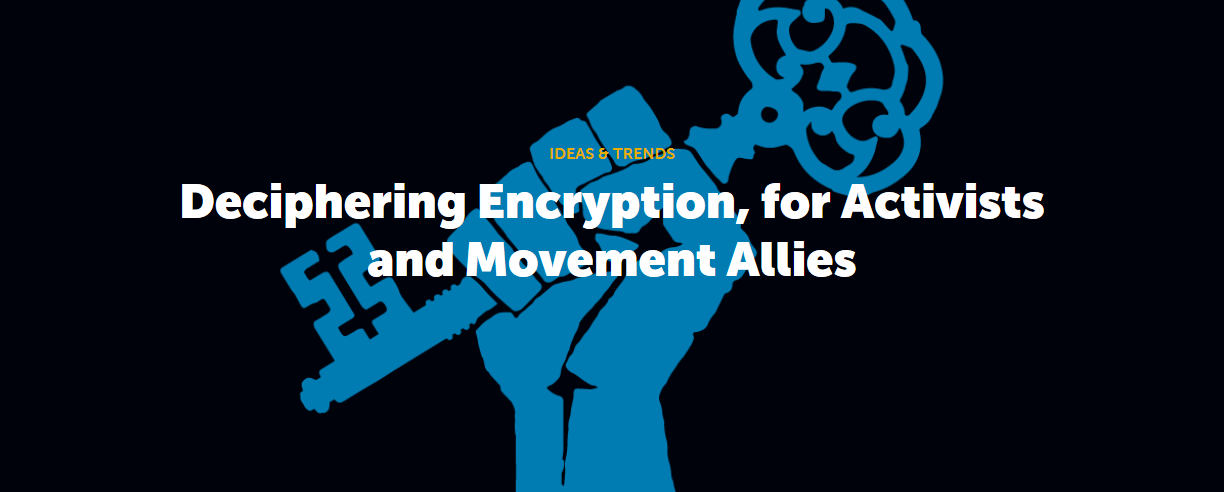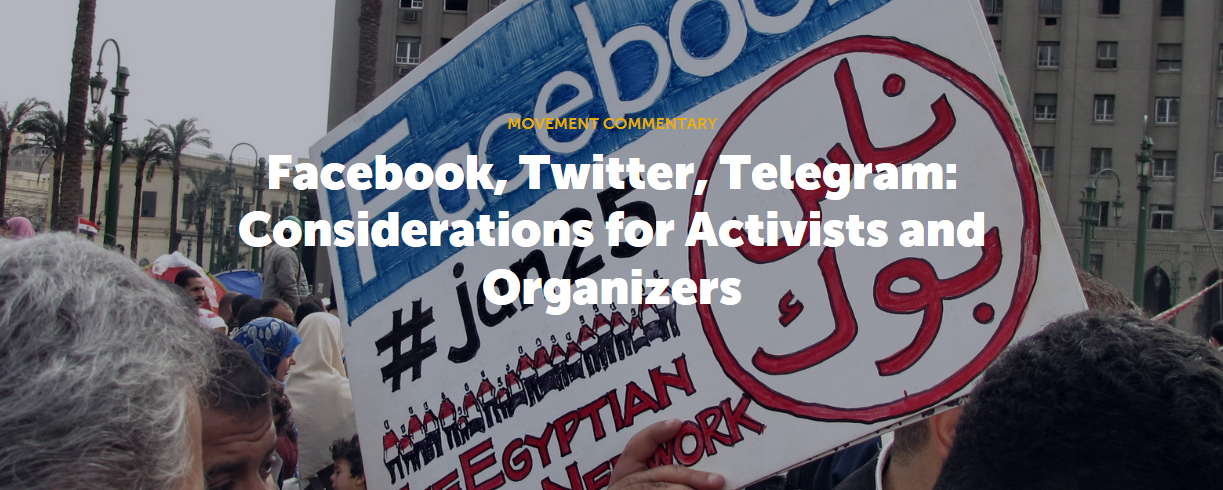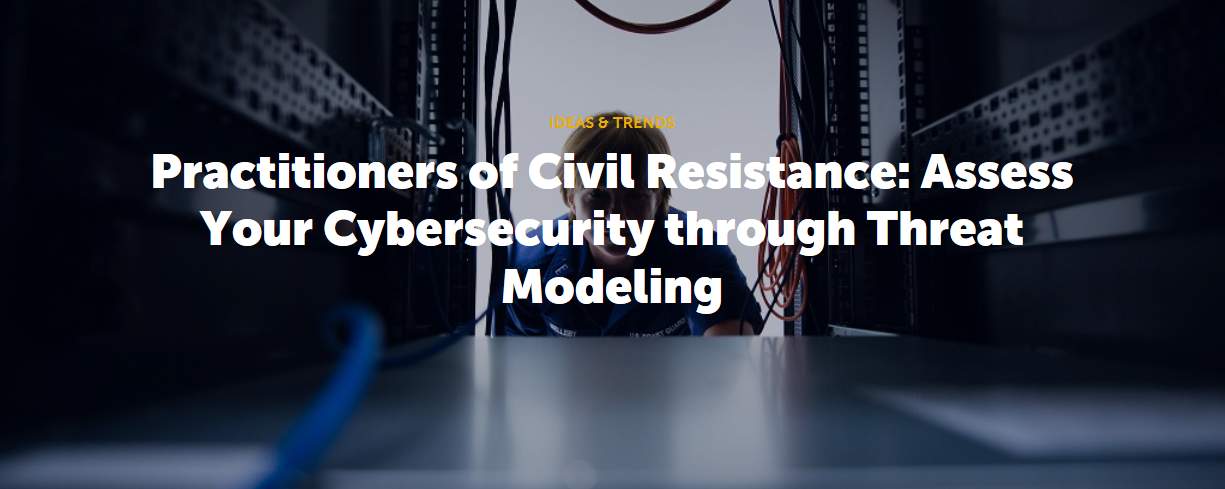Minds of the Movement
An ICNC blog on the people and power of civil resistance
by Minds of the MovementAugust 01, 2018
“When you give in to privacy nihilism and you decide that you are not going to do anything, you’ve let the government win already.” - Eva Galperin, EFF Director of Cybersecurity
In 2018, ICNC's Minds of the Movement blog is rolling out a thematic series exploring important digital security questions that activists, organizers, and other practitioners often encounter in their civil resistance work. Not sure what encryption is or why it's important to know about? Undecided about whether you should use Facebook to organize nonviolent actions? In need of a good starting point for understanding the digital security risks you and your nonviolent movement may face? Read on to learn more, and check back soon for additional posts in this series.
By: Lisha Sterling
If the police came and took your computer, would they be able to read all your documents and gain access to your activist contacts? If you’re using the public WiFi in a coffee shop, can someone else read the email you’re writing to organize your next nonviolent action? Encryption is what keeps our data private on the network and in our hard drives. Without it, everything you send through the Internet is right out in the open for anyone to see, like the words on a picture postcard from your last vacation. […]
Read article
By: Lisha Sterling
Facebook is a marvelous tool for civil resistance organizing, but it can also be a dangerous place for activists. Some movements may decide to use Facebook in ways that create higher risk, in order to gain visibility and public support, or show that they are not afraid or intimidated. Other movements may seek to avoid risk and not use Facebook at all. These are strategic choices that activists must make, and the purpose of this blog post is to help you assess risks of using Facebook and other social media tools in your activism. […]
Read article
By: Lisha Sterling
Most activists and other practitioners of civil resistance realize that governments can use various methods of digital surveillance to find and silence dissenters. The question of how to protect ourselves can seem overwhelming. Wherever you look there are different and often contradictory recommendations. It can all seem too complicated, just impossible to keep up with. What you need is a place to start. You need a framework to help you make good security decisions, choose the right tools, and keep your privacy secure. Creating a threat model gives you just that. […]
Read article
More posts coming soon!


